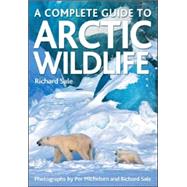
Richard Sale is the author of Polar Reaches: The History of Arctic and Antarctic Exploration. He lives in the UK.
Per Michelsen frequently photographs the northern reaches of the globe. He lives in Norway.
| Acknowledgments | p. 4 |
| Preface | p. 5 |
| Introduction | p. 6 |
| Defining the Arctic | p. 6 |
| Arctic geology | p. 9 |
| The Arctic climate | p. 19 |
| Humans in the Arctic | p. 23 |
| Arctic habitats | p. 30 |
| Adaptations for Arctic life | p. 36 |
| Speciation and biogeography | p. 42 |
| The fragile Arctic | p. 45 |
| How to use the field guides | p. 54 |
| Field guide to Arctic birds | p. 57 |
| Loons | p. 58 |
| Grebes | p. 66 |
| Albatrosses, petrels and allies | p. 71 |
| Cormorants | p. 78 |
| Wildfowl | p. 82 |
| Swans | p. 84 |
| Geese | p. 88 |
| Ducks | p. 102 |
| Raptors | p. 138 |
| Grouse | p. 160 |
| Cranes | p. 165 |
| Waders | p. 170 |
| Plovers | p. 171 |
| Stints and sandpipers | p. 179 |
| Snipes and dowitchers | p. 203 |
| Curlews, godwits and allies | p. 208 |
| Turnstones | p. 222 |
| Phalaropes | p. 224 |
| Skuas | p. 232 |
| Gulls | p. 240 |
| Terns | p. 259 |
| Auks | p. 261 |
| Owls | p. 283 |
| Kingfishers | p. 287 |
| Larks | p. 288 |
| Swallows | p. 290 |
| Pipits and wagtails | p. 291 |
| Thrushes and chats | p. 299 |
| Warblers, tits and chickadees | p. 306 |
| Crows | p. 310 |
| New World warblers | p. 315 |
| New World sparrows and buntings | p. 320 |
| Finches | p. 334 |
| Field guide to Arctic mammals | p. 341 |
| Shrews | p. 342 |
| Rodents | p. 348 |
| Lagomorphs | p. 367 |
| Ungulates | p. 372 |
| Carnivores | p. 382 |
| Dogs | p. 382 |
| Bears | p. 389 |
| Cats | p. 398 |
| Mustelids | p. 400 |
| Pinnipeds | p. 412 |
| Cetaceans | p. 430 |
| A visitor's guide to the Arctic | p. 456 |
| Index | p. 462 |
| Table of Contents provided by Ingram. All Rights Reserved. |
The New copy of this book will include any supplemental materials advertised. Please check the title of the book to determine if it should include any access cards, study guides, lab manuals, CDs, etc.
The Used, Rental and eBook copies of this book are not guaranteed to include any supplemental materials. Typically, only the book itself is included. This is true even if the title states it includes any access cards, study guides, lab manuals, CDs, etc.